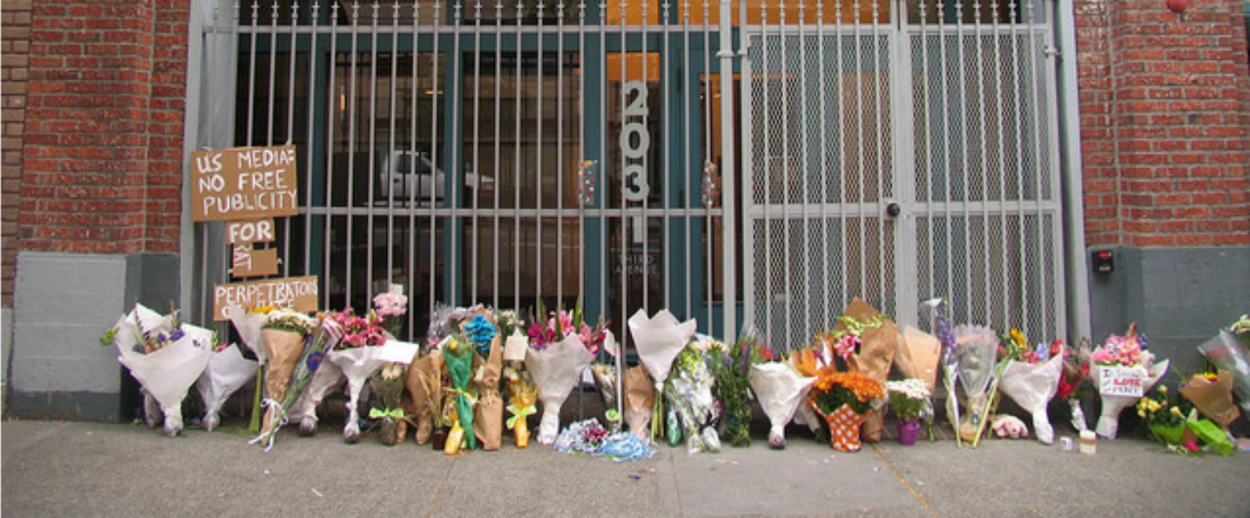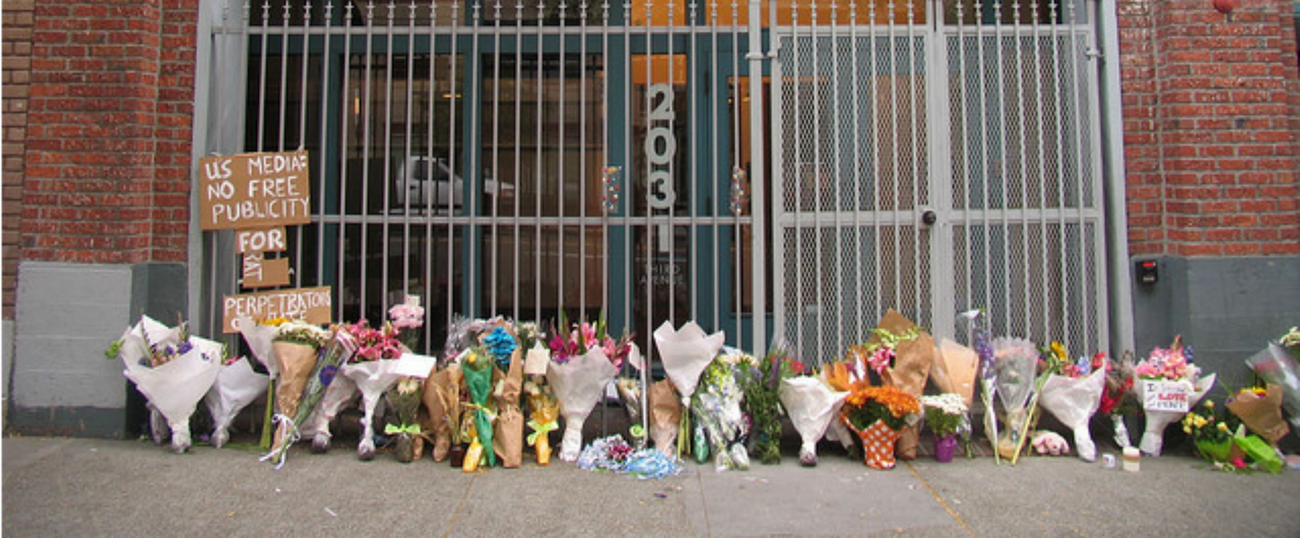A Brief History of Anti-Jewish Attacks in America
A new study of the last 47 years of attacks against Jews and Israelis in the U.S. offers insight into these patterns of violence




It’s an anxiety that no longer belongs to the realm of paranoia, assuming it ever did: Is it only a matter of time before an Orlando- or Charleston-scale atrocity takes place at an American synagogue or Jewish school?
There have been several ideologically driven attacks on American Jewish communal institutions in the past decade: A gunman killed one person after using a hostage to gain access to the offices of the Seattle Jewish Federation in 2006; three people were murdered when a 73-year-old member of white extremist terror group opened fire on a Jewish senior home in Kansas City in 2014; and an aging Nazi sympathizer shot and killed a guard at Washington’s Holocaust Museum in 2009. But the emergence of ISIS, along with the seemingly growing profile of white nationalist leaders and groups, represents a potentially new impetus for attacks on American Jews. A string of violent incidents targeting Jews in other parts of the world, like the massacre at a Jewish school in Toulouse in 2012 and a Kosher supermarket in Paris last year, add to the importance of assessing where anti-Jewish violence in the U.S. could come from, and what form those threats could take.
A new report from Community Security Service (CSS) chronicles and analyzes the pattern of attacks on Jewish and American targets inside the United States from 1969 to 2016. CSS’s unprecedented survey anti-Jewish incidents makes a worrying but by no means alarmist case against complacency. CSS, a nonprofit aimed at improving security practices and awareness within American Jewish communities, found that militant white supremacists, Islamic radicals, and Palestinian-affiliated militants were responsible for the vast majority of attacks covered under the study. This relatively diverse range of religious, national, and racial motivations inspired complex multiexplosive attacks, as well as crude arson attempts—violence against American Jews has taken on a variety of forms over recent decades, and both the methods and sources of anti-Jewish violence have proved worryingly difficult to anticipate.
Here are some of the report’s more notable findings:
Attackers used a variety of tactics and methods. The attacks covered in the study span from seemingly improvised fire bombings and gun attacks to sophisticated attacks that took years to conceive and execute. A 1997 attack plotted by two would-be Palestinian bombers involved an elaborate planned suicide attack on the Atlantic Avenue subway station in Brooklyn aimed at maximizing Jewish casualties; in 2009, Al Qaeda in the Arabian Peninsula conspired to send bombs in shipping containers to American synagogues halfway across the world. In contrast, a number of deadly attacks, like the 2009 shooting at the Holocaust Museum in Washington and the 2002 killing of two people at an El Al counter at Los Angeles International Airport were carried out by individuals who were linked to white nationalists groups or inspired by overseas terrorist organizations, but who still acted on essentially their own initiative. Other plots involved specific foreign direction and months of planning and surveillance—several of the Hanafi Muslim militants who took hostages at B’nai Brith’s Washington headquarters in 1977 got themselves hired on a construction team in order to study the building’s layout. The Fatah Black September Organization-linked bomb that failed to detonate under El Al’s New York terminal in 1973 was the first terrorist device found on U.S. soil to use an electro-chemical cell as a timing device.
This diverse history makes it difficult to always anticipate or intercept attacks, and the ever-changing profile of anti-Jewish violence means Jewish institutions should probably be prepared for a wide range of threats. The report notes “perpetrators’ investment in longer-term planning of complex attacks that may require more preparation, training, weapons, and attack planning” in recent years. At the same time, “both Al-Qaeda and ISIS have separately issued calls to their individual followers to carry out attacks at places and times of their own choosing.”
Attack on Israeli targets are a relatively small percentage of the total. This isn’t to underplay the significance of plots that specifically target Israeli diplomats, individuals, companies, or facilities: Fatah-affiliated terrorists assassinated the Israeli embassy’s military attache outside of his home in Chevy Chase, Maryland, and set large explosive devices at two Israeli bank offices in New York and underneath El Al’s terminal at Kennedy Airport in 1973 alone (the bomb’s trigger failed, but it was programmed and positioned before intelligence or law enforcement could discover it). Even so, these attacks make up 7 percent of the incidents reviewed in the CSS study, far below the prevalence of attacks on synagogues (51 percent) and Jewish communal institutions (14). This cuts against any assumption that Israel is somehow at the core of violent anti-Semitism in the United States. Some 93 percent of attacks weren’t aimed at the Jewish state and its institutions or symbols, but at places where Jews of any nationality could be expected to gather or participate in communal life.
The attacks are sometimes a sign of things to come. In 1990, El-Sayid Nossair assassinated militant right-wing rabbi Meir Kehana in New York; three years later, associates of Nossiar carried out a deadly bombing at the World Trade Center. In 2009, Abdulhakim Mujahid Muhammad killed two people at a military recruiting center in Little Rock, Arkansas—just days after shooting at the homes of two rabbis who lived nearby. Although the report doesn’t make this exact observation, there’s a certain continuity between decades’ worth of white nationalist attacks on synagogues and the June 2015 shooting spree that left 13 people dead at a historic African American church in Charleston, South Carolina.
The history of attacks is longer than you probably think. Much of the report consists of summaries of every known attack on a Jewish target in the United States. It makes for engrossing if sobering reading, and even comparatively minor incidents tell a story of Jewish communities dealing with the specter of violent harassment: Temple Emmanu-El of Reno, Nevada, was the target of two arson attempts between 1999 and 2001; Aryan Nation members set fire to three synagogues in Sacramento, California, in a single night in 1999, and there were five firebomb attacks on Bay Area synagogues just in November of 1990. None of these incidents were lethal, but each one represents an instance of violent extremists attempting to destroy Jewish institutions and to drive some portion of American Jewish life out of existence.
The report is a timely reminder that the threat of violence has been a reality decades before ISIS came on the scene, and before the recent increase in confidence and visibility among American white nationalists. It’s also a reminder of how many close calls there have been. The CSS study is laced with stories of attacks that were thwarted at the last second or miraculously countered or botched while in progress, and one of the report’s key takeaways is that American Jews shouldn’t depend on luck alone in avoiding a tragedy.
Armin Rosen is a staff writer for Tablet Magazine.